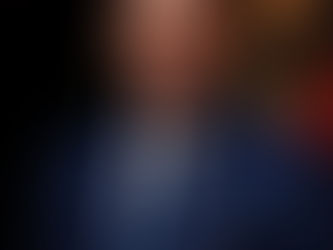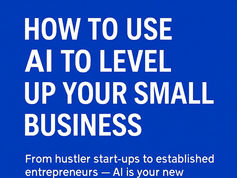Threads of the City: The Rise of Urban Fashion in Baltimore and the DMV
- YHTL Contributor

- Aug 2
- 5 min read
Updated: Aug 6

Baltimore Swagger: Where Fashion Meets Culture
In the '90s and early 2000s, urban fashion became more than just clothing. It was a symbol of pride, expression, and identity. While New York and Philadelphia dominated mainstream attention, Baltimore and the DMV quietly cultivated their own distinctive streetwear culture. Gritty, unapologetic, and deeply rooted in the city’s music, hustle, and community, fashion in Baltimore became a powerful cultural currency.
While New York gave us Timberlands, Pelle Pelle, and Sean John, and Philly leaned heavy on Mitchell & Ness and custom sneakers, Baltimore stood on its own with homegrown brands that told local stories—brands like H.O.B.O., Samos, and Cashland. These brands weren’t just clothing labels—they were institutions within the city, dressing entire generations in the spirit and sound of the streets.
H.O.B.O. CLOTHING (Helping Our Brotha's Out)
Founded in 1994 by John and Angela Day in Capitol Heights, Maryland, H.O.B.O. (Helping Our Brotha’s Out) Clothing was one of the first urban fashion brands to emerge from the DMV. The brand began humbly, with the Days selling T-shirts out of the trunk of their car at flea markets, college campuses, and local events. With bold lettering, empowering messages, and a strong grassroots following, H.O.B.O. quickly gained traction.
By 1996, the couple had opened their first official retail store in Capitol Heights. H.O.B.O. became synonymous with DMV pride and was widely recognized for its baggy jeans, graphic hoodies, reflective and rhinestone-studded logos, velour tracksuits, and even signature fragrances. The brand had a unique blend of flash and authenticity, making it popular with both street hustlers and college students.
Its popularity led to multiple store openings across Maryland, including Baltimore and Waldorf, and plans for expansion in Philadelphia and Atlanta. H.O.B.O. was frequently featured on local television shows, sponsored youth events, and ran fashion shows that highlighted DMV talent.
Though it eventually faded from prominence in the mid-2000s due to increasing competition and market saturation, H.O.B.O. is remembered as a pioneer in DMV streetwear and a symbol of independent Black entrepreneurship.
SAMOS CLOTHING
Samos Clothing, a Baltimore-native brand, came into prominence in the early 2000s. Founded by a group of local entrepreneurs, Ty and Fred Bear, with deep roots in Baltimore’s street culture, Samos quickly gained a reputation for exclusivity and urban flair. The brand catered directly to the city’s youth, offering limited-edition drops, heavy embroidery, custom-styled lettering, and color-coordinated designs that matched with Nike Foams, Jordans, and Air Force 1s.
Unlike H.O.B.O., which had regional influence, Samos focused on dominating Baltimore’s inner city. Its clothing often featured the Samos name in bold font, custom patches, and designs that resonated with the city’s tough, street-smart aesthetic. Customers lined up outside small boutiques to grab new releases, and wearing Samos became a signifier of being tapped into the local scene.
The brand was especially embraced by Baltimore’s rap and club music community, regularly appearing in music videos and on stage. As the city’s sound evolved, so did the fashion, and Samos adapted with its customers.
While it never reached the scale of some national brands, Samos’ hyper-local success and cultural impact are undeniable. It remains an underground staple and a symbol of Baltimore pride.
CASHLAND Apparel
Emerging in the early 2010s, Cashland Clothing has arguably become the most prominent modern streetwear brand to come out of Baltimore. Cashland has elevated Baltimore’s fashion presence beyond regional borders.
Founded by local fashion entrepreneur Jon Cash, Cashland started by selling T-shirts and sweatsuits from the back of cars and pop-up shops. The line featured matching joggers and hoodies in bold colors with the unmistakable Cashland branding stitched across the chest and thigh.
What set Cashland apart was its ability to bridge streetwear and luxury. High-quality stitching, fitted cuts, and an eye for color coordination made their products feel premium. Influential Baltimore artists like Lor Scoota, YG Teck, and Roddy Rackzz often sported the brand in performances, Instagram posts, and videos, turning Cashland into a cultural force.
The brand has since opened retail stores and expanded its product line to include T-shirts, coats, hats, and limited-release collections. Despite its growth, Cashland remains firmly rooted in Baltimore, using its platform to represent the city’s culture, resilience, and ambition.
Urban Fashion Timeline in Baltimore & the DMV
Early 1990s: National urban brands like Cross Colours, FUBU, and Karl Kani become popular in East Coast cities. Baltimore youth embrace the wave but look for local representation.
1994: H.O.B.O. is founded by John and Angela Day in Capitol Heights, MD, marking the start of regional urban fashion entrepreneurship.
1996: H.O.B.O. opens its first storefront and begins to dominate the DMV’s streetwear scene.
Late 1990s: DMV fashion evolves with the influence of Go-Go, hip-hop, and college culture. H.O.B.O. launches rhinestone belts, matching sweatsuits, and urban accessories.
Early 2000s: Samos Clothing gains visibility in Baltimore. Custom streetwear pieces dominate the underground fashion scene.
2002–2005: H.O.B.O. peaks in popularity and begins expanding to new cities. Samos continues building a local legacy.
2010: Local Baltimore artists begin referencing homegrown fashion in lyrics and visuals.
2012: Cashland launches with a strong focus on Baltimore identity. The brand uses social media and music industry connections to gain visibility.
2014–2020: Cashland becomes a leading fashion presence in Baltimore, with artists, athletes, and influencers embracing the brand.
Present Day: All three brands—H.O.B.O. (legacy), Samos (underground), and Cashland (active)—represent different eras and styles in Baltimore’s fashion timeline. Together, they reflect the evolution of local fashion from hustle to heritage.
Baltimore vs. The World: A Style of Its Own
Compared to New York’s layered street-luxury aesthetic or Philly’s affinity for jerseys, kicks, and throwbacks, Baltimore’s style was rooted in color coordination, clean sneakers, matching sets, and logo-driven gear. The city took pride in maintaining a sharp look—whether that meant a full Samos outfit matched to Foams, a rhinestone H.O.B.O. hoodie worn to a club, or a red Cashland set for a video shoot.
Baltimore’s style was also shaped by its environment—gritty, authentic, and loyal to the city’s own. Residents supported their own brands fiercely. Shopping at Mondawmin Mall or a local boutique wasn’t just a retail experience; it was a cultural ritual. People knew which brand drop was coming, what colorways were rare, and who was first to rock it.
The same streets that raised the local music scene birthed these fashion movements. The synergy between Baltimore club music and urban clothing was seamless—clothes looked like how the music sounded: bold, confident, and unmistakably Baltimore.
Conclusion: Stitching Together Legacy
Urban fashion in Baltimore and the DMV is a layered story of hustle, pride, and identity. H.O.B.O. taught a generation the value of community-driven enterprise. Samos gave the city a hyper-local badge of honor. Cashland modernized the formula and carried it into the social media age.
These brands didn’t follow trends—they created them. They were worn by those who lived the culture, not just consumed it. They dressed the city not just in fabric, but in dignity and defiance.
As Baltimore continues to evolve, its fashion roots remain strong. These local legends have paved the way for new designers, showing that you don’t need Paris or Milan to define what’s fashionable. Sometimes, the real runway is a block party on North Avenue, a concert at Soundstage, or a corner store on Greenmount.
Urban fashion in Baltimore isn’t just style—it’s story. And it’s still being written.

















Comments